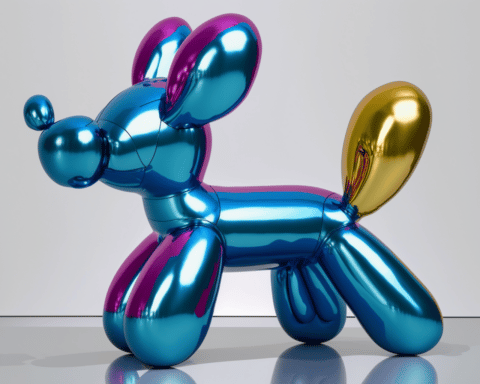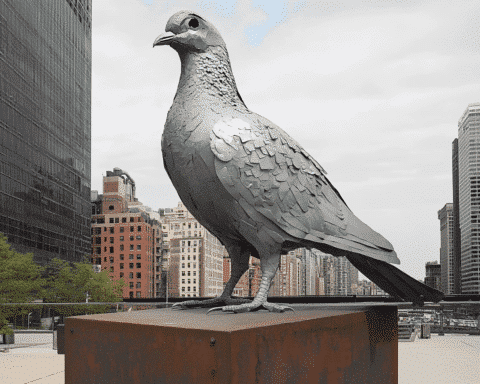In the ever-evolving panorama of modern art, Pop Art stands out with its unapologetic embrace of the commercial, the mundane, and the kitschy, transforming them into high art. This transformation is vibrantly showcased outside the Guggenheim Bilbao with Jeff Koons’ “Puppy,” a whimsical 43ft-high Highland Terrier sculpture made from 38,000 bedding plants, acting as an unintentional advert for the museum’s latest exhibition, “Signs and Objects: Pop Art from the Guggenheim Collection.” This exhibition celebrates the audaciousness of Pop Art, a movement that has seamlessly woven into the fabric of contemporary culture since its heyday in the 1960s.
The show delves deep into the essence of Pop Art, exploring its roots in Dada, Surrealism, and what some critics might call cheating. It combines bombastic works by Pop masters like Andy Warhol, Roy Lichtenstein, and Robert Rauschenberg with contemporary pieces that challenge and extend the movement’s ethos. Warhol’s observation on the desensitization effect of repeated gruesome images and Lichtenstein’s iconic cartoonish dot paintings are presented alongside Lucia Hierro’s politically and culturally charged pieces, showcasing the movement’s adaptability and enduring relevance.
The Guggenheim Museum’s historical role in catapulting Pop Art to fame is highlighted through its pioneering 1963 exhibition “Six Painters and the Object,” which marked the museum debut of Warhol, Lichtenstein, and Rauschenberg, among others. The Bilbao exhibition, with its 40 works dating from 1961 to 2021, serves not just as a celebration of Pop Art’s legacy but also as a reflection on its impact on contemporary consumerism and self-promotion. Lauren Hinkson, co-curator of the exhibition, remarks on the proactive nature of Pop Art, noting Andy Warhol’s anticipation of today’s culture of self-promotion and consumerism, drawing a parallel to contemporary phenomena like the Kardashians.
The exhibition also underscores Pop Art’s capacity for critique and cultural specificity, as seen in Lucia Hierro’s “A Little Bit of Everything,” which combines personal and political narratives with a humorous twist. Hierro’s work and others in the show encapsulate Pop Art’s multifaceted nature and challenge viewers to reconsider the boundaries between high art and popular culture.
The Guggenheim Bilbao’s “Signs and Objects: Pop Art from the Guggenheim Collection” reiterates the timeless appeal of Pop Art, demonstrating its ability to continuously engage with and reflect upon the complexities of modern life. From Koons’ flower-clad terrier to Hierro’s oversized shopping bag, the exhibition is a testament to Pop Art’s enduring wit, satire, and insight. Pop Art’s celebration of the ordinary and its critique of consumer culture proves that it is far from fading into the background of artistic movements; instead, it remains as relevant and provocative as ever.




